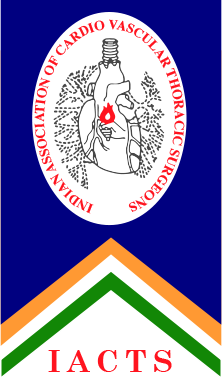

Contributed by:
Dr. Harinder Bedi
Cardiovascular Disease (CVD) involving the coronary arteries of the heart will manifest as angina or chest pain once fully developed. Angina can be described as discomfort, heaviness, pressure, aching, burning, fullness, squeezing, or painful feeling in your left chest. It can be mistaken for indigestion or heartburn. The pain will, classically, be on the left side of the chest and radiate to the jaw and left arm. At times, it may be limited to the jaw. It may be accompanied by chest discomfort, shortness of breath, pain or discomfort in the jaw, neck, back, arm, or shoulder.
At times, the classic symptoms may not be present, especially in a patient with diabetes; the patient may just feel nauseous, light-headed, or unusually tired. So, if someone feels even vague discomfort, he/she must immediately see a local doctor and get an ECG. In doubtful cases, the doctor may get an urgent simple blood test (Trop T/I) which is available in most places in India, to confirm or rule out an impending heart attack.
What is CVD?
Early Warning signs and symptoms of heart disease
Heart disease is a deadly killer, but if detected early can be controlled. The early signs of heart disease to be looked for – by leading questions, if need be – by the primary treating doctor are described as follows.
Chest Pain
Chest pain is discomfort or pain that your patient may feel along the left chest or anywhere between the neck and left upper abdomen. It is still the most common symptom of poor blood flow to the heart or a heart attack. This type of chest pain is called angina.
The intensity of the pain does not always relate to how severe the problem is.
Some patients may feel crushing pain, while others may feel only mild discomfort.
Women, older adults, and people with diabetes may have little or no chest pain. Some people have symptoms other than chest pain, such as:
Other symptoms of a heart attack can include:
Shortness of Breath
When the heart can't pump blood as well as it should, blood backs up in the lungs. Fluid leaks into the lungs and causes shortness of breath. This is a symptom of heart failure.
Your patient may notice shortness of breath:
Coughing or Wheezing
Coughing or wheezing that doesn't go away can be another sign that fluid is building up in your patient's lungs. He may also cough up mucus that is pink or bloody.
Swelling in the Legs, Ankles, or Feet
Swelling (edema) in the lower legs is another sign of a heart problem. When the heart doesn't work as well, blood flow slows and backs up in the veins in the legs. This causes fluid to build up in your patient's tissues.
Your patient may also have swelling in the abdomen (ascites) or notice some weight gain. A heart patient will likely have an additional poor blood supply to the legs. This may lead to:
Fatigue
Tiredness can have many causes. Sometimes it simply means that your patient needs more rest. But feeling run down can be a sign of a more serious problem. Fatigue may be a sign of heart trouble when:
Fast or Uneven Heartbeat (Palpitations)
If the heart cannot pump blood as well, it may beat faster to try to keep up. A fast or uneven heartbeat can also be a sign of an arrhythmia.
When Should Patients Call a Doctor
If the patient has any of the above signs of heart disease, he must call his health care provider immediately. He should not wait to see if the symptoms go away or dismiss them as nothing.
So – do tell your patients to call the local emergency number if: